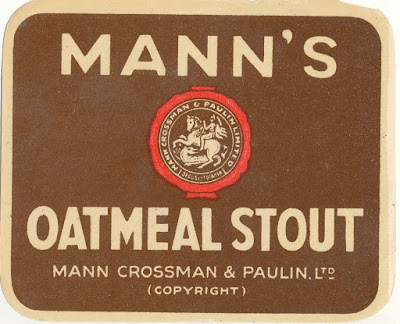“Stoppers and Crown Corks
because the closure forms an apparently minor part of the bottled beer equipment, it often does not receive the attention which is its due. What is the good of producing a good beer, and going to the further expense of bottling it, if it is to be spoilt at the last stage by the use of an inferior closure? There can be no doubt that the introduction of screw-stoppers and crown corks have contributed largely to the present-day popularity of bottled beers. But it is upon their use or abuse that the quality of the article depends. Stoppers as made to-day differ considerably from those originally turned out.”
"Brewing Theory and Practice" by E. J. Jeffery, 1956, page 348.
It’s pretty obvious that a cheap stopper than doesn’t seal properly is likely to bugger your beer. The triumph of the crown cork is a surprisingly recent development. Screw stoppers predominated from the late 19th century until around WW II. They were a huge improvement of corks, the earlier method of sealing bottles. Corks were porous and liable to jump out if the pressure inside the bottle became too great.
Flip-top stoppers, as used by Grolsch never seem to have been that popular in Britain. While in Germany they were the preferred format until at least WW II. And have made a comeback in the last 20 years.
Here’s what you should look for in a screw stopper:
“Early stoppers had the appearance of compressed charcoal, and the heads parted easily from the threaded portion. This fault is still to be found in cheap grades. Better class stoppers to-day are made from vulcanite, with a hard and smooth external appearance. The milling round the head is better defined, and tougher, so that it will not wear off as was formerly the case. A rubber band of good quality should be insisted upon, as upon it depends the final seal. With stoppers as with bottles, the makers can now supply a quality which will stand the strain of pasteurization with a minimum of damage.”
"Brewing Theory and Practice" by E. J. Jeffery, 1956, page 348.
 I get the feeling that pasteurisation of bottled beer wasn’t that common before WW II. I assume that because makers were only just starting to deliver bottles that were up to it in the mid-1950’s.
I get the feeling that pasteurisation of bottled beer wasn’t that common before WW II. I assume that because makers were only just starting to deliver bottles that were up to it in the mid-1950’s.Oddly, the type of stopper depended in the bottle size:
“For half pints the crown cork has entirely replaced the screw stopper; for pints the screw stopper still largely holds the field and for quarts, when produced, it is universal. The main advantage of the screw stopper over the crown is that if only part of the contents are to be consumed the remainder can be kept in good condition, whereas a crown cannot be replaced as an airtight closure, hence the retention of the screw stopper for pints and quarts. There is the necessity for a special opener for crown corks, but this is not serious as the crown corks opener seems nowadays to be usually available. The crown cork has two very great advantages over the screw stopper. For quick trade in the bar, where the crown can be easily and quickly removed this type of closure is unequalled. There is not the necessity of recovering the stopper and the bottler is not faced with the rather troublesome job of cleaning the screw-stopper and ensuring that the rubber rings are in good condition."
"Brewing Theory and Practice" by E. J. Jeffery, 1956, page 348.
I was wondering why half pints had all gone over to crown corks. Simple – you were unlikely to want to reseal a half pint. You don’t really need a special opener for a crown cork. Ask a Czech. They have dozens of methods of getting a crown cork off without a bottle opener. Even I can do it.
As well as being difficult to clean, screw stoppers could easily become separated from their bottle and get lost.
It’s worth noting that by the 1950’s most bottled beer in pubs was sold in half-pint bottles. Though there were still plenty of pints in the take-home trade.
More details about crown corks:
“At one time difficulty was experienced with porous corks in the crowns and often beer would come into contact with the metal crown and cause discoloration of the cork. A backing of lacquered paper or a layer of lacquer between cork and metal will prevent this trouble. Many crowns are furnished with an aluminium spot in the centre of the cork, so that the cork itself only comes into contact with the lip of the bottle. The use of a slice of natural cork has largely been superseded by a composite of cork particles bonded together with a synthetic resin. As received in their cartons crown corks are usually practically sterile and if care is used in their handling between carton and the hopper on the filling machine no serious trouble of infection need be anticipated. In fact such trouble is extremely rare. The use of ordinary corks as closures for beer bottles is to all intents and purposes obsolete. Polythene stoppers and caps are being developed, but have not yet come into use to any extent for beer in this country.”
"Brewing Theory and Practice" by E. J. Jeffery, 1956, page 349.
The seals are all of plastic now. I can remember when they were still little disks of real cork.
Bottle washing next.












































































No comments:
Post a Comment